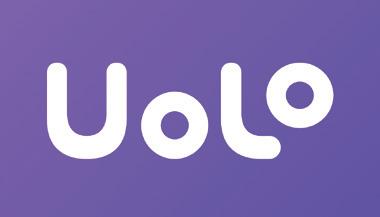
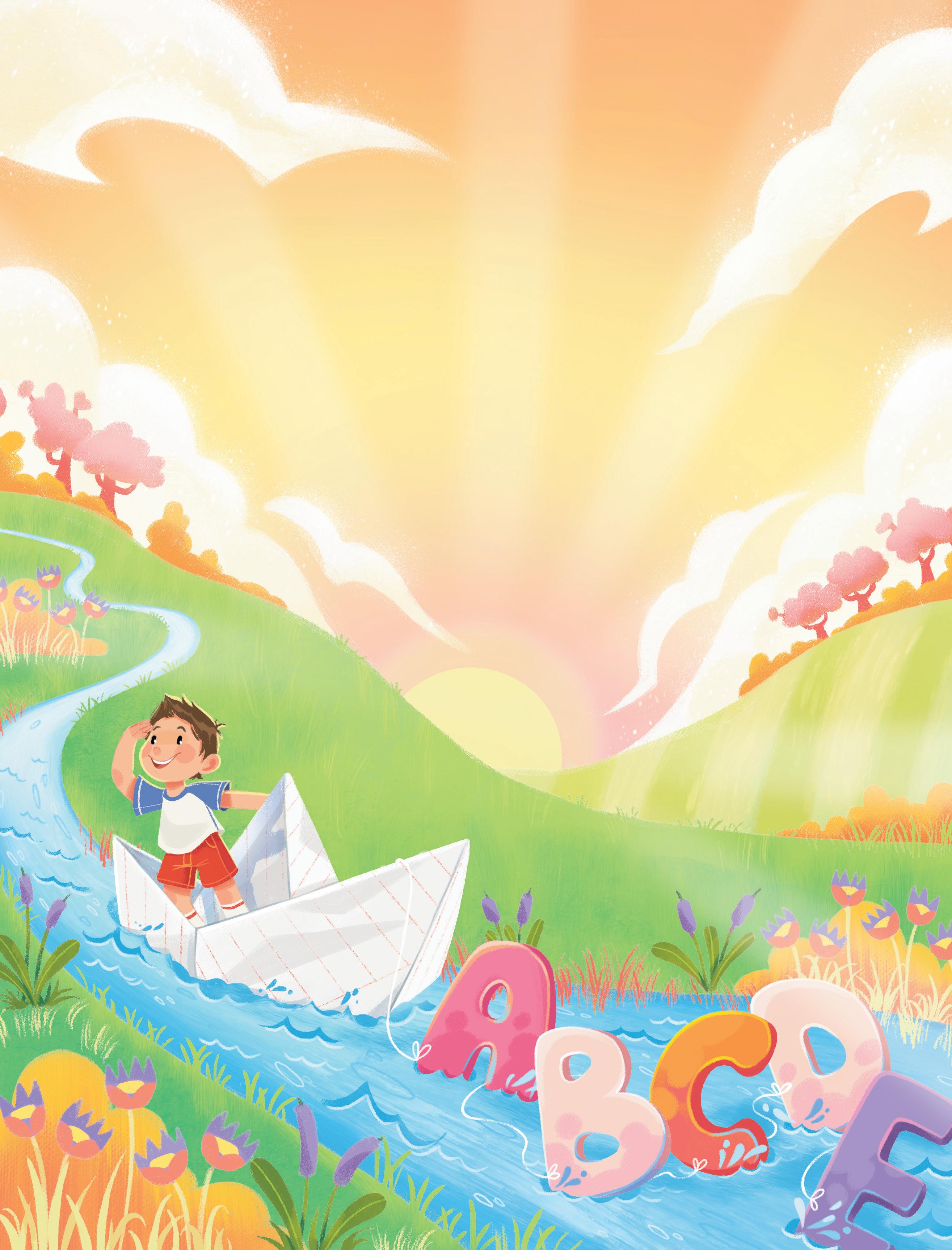



Name:
Class: School:

Academic Authors: Sonia Duggal, Anuj Gupta
Creative Director: Bhavna Tripathi
Book Production: Naveen Gauniyal, Sanjay Kumar Goel
Project Lead: Pooja Gupta
VP, Learning: Abhishek Bhatnagar
All products and brand names used in this book are trademarks, registered trademarks or trade names of their respective owners.
© Uolo EdTech Private Limited
First impression 2025
This book is sold subject to the condition that it shall not by way of trade or otherwise, be lent, resold, hired out, or otherwise circulated without the publisher’s prior written consent in any form of binding or cover other than that in which it is published and without a similar condition including this condition being imposed on the subsequent purchaser and without limiting the rights under copyright reserved above, no part of this publication may be reproduced, stored in or introduced into a retrieval system, or transmitted in any form or by any means, electronic, mechanical, photocopying, recording or otherwise, without the prior written permission of both the copyright owner and the above-mentioned publisher of this book.
Book Title: Dawn Literacy Skillbook Level C
ISBN: 978-81-980375-1-0
Published by Uolo EdTech Private Limited
Corporate Office Address: 85, Sector 44, Gurugram, Haryana 122003
CIN: U74999DL2017PTC322986
Illustrations and images: www.shutterstock.com, www.stock.adobe.com and www.freepik.com
All suggested use of the internet should be under adult supervision.


elcome to DAWN, our comprehensive series for Early Childhood Education that has been meticulously crafted to align with the guidelines of the Foundational Stage as outlined in the National Education Policy (NEP) 2020. This series is designed to provide a holistic learning experience, fostering the comprehensive development of young learners in accordance with the developmental milestones and learning outcomes specified in the National Curriculum Framework (NCF) 2022
DAWN offers a rich blend of interactive and activity-based content to nurture each child's physical, emotional, intellectual, and spiritual growth. Our approach ensures that learning is enjoyable and meaningful, catering to every child's interests and abilities. By integrating various domains of development, we aim to create an environment where children can thrive, explore their unique potentials and cultivate a lifelong love for learning.
The curriculum is structured to promote Physical Development by incorporating activities that enhance motor skills, health, and overall physical well-being. Social and Emotional Learning (SEL) is a critical component focusing on building empathy, cooperation, and strong interpersonal relationships. Through engaging and thought-provoking activities, children develop Intellectual Capacities, fostering critical thinking, problem-solving, and a curious mind.
In line with the NCF 2022, DAWN also emphasises Spiritual and Moral Development, encouraging children to understand and embody values such as honesty, integrity, and respect for others. We aim to instill a sense of responsibility towards the environment, promoting sustainable practices from an early age.
Our curriculum is not just a series of lessons but a journey of discovery, growth, and joy. We believe that every child is unique, and our tailored approach ensures that each learner can engage with the content in a way that resonates with their individual needs and interests. By providing a nurturing and stimulating environment, DAWN sets the foundation for future success, preparing children not just for school, but for life.
The DAWN Level C Kit includes:


Free Additional Resources:
• Flash Cards
• Sticker Sheets
• Suggested Activities List, for teachers and parents
• Teacher's Manual
• Digital Learning Resources
Thank you for embarking on this educational journey with us. Together, we can make the dawn of early childhood education a bright and promising start for every child.

Dawn is a carefully crafted activities-based learning program that caters to all domains of Early Childhood Education, including physical development, emotional and mental development, intellectual development and spiritual development. The program includes textbooks in english, mathematics, general awareness, STEM exploration and rhymes & stories. The program also extends ample support to teachers through lesson plans and other assets that help attaining best outcomes.

Engaging Textbooks
Teacher Manual
Assessment Rubrics for Teachers
Progress Reporting Sheets
Student and Teacher Apps
Learning Videos
Interactive Tasks & Exercises
iv The classroom program is augmented by the digital world, which includes assets like animated talking books, phonic songs, animated rhymes, animations on pre-number concepts, numbers and shapes, and other interactive activities.

The National Education Policy (NEP) 2020 represents a transformative shift in the country’s education system. It aims to create a more holistic, dynamic and multidisciplinary approach to education. NEP 2020 focuses on fostering conceptual understanding, skills, values and competencies that align with the demands of the 21st century, while also preserving India’s rich cultural heritage. UOLO is fully committed to actualizing the vision of NEP 2020 by meticulously adhering to its outlined recommendations.










1. Physical and motor development
2. Cognitive development
3. Cultural and artistic development
4. Socio-emotional and ethical development
5. Language and Literacy
6. Numeracy
7. Play and activity-based learning
8. Holistic and multi-faceted learning
9. Inclusion of local traditions of India

10. Technology integration
Competencies and Domains
Teaching and Learning Pedagogy



Rhymes and Stories
Build familiarity with rhythm, phonetics, and vocabulary. Encourage development of gross motor skills.


Flash Cards
Assist development of basic numeracy, literacy and fine motor skills in a playful and engaging way.


Drawing and Scribbling activities
Promote hand-eye coordination and motor skills.

STEM Exploration activities
Encourage curiosity, critical thinking and problem-solving.


Pretend
Reading and Drawing
Contribute





Exposure to diverse cultures to develop an appreciation for global and local artistic traditions, and connect with cultural heritage.
2 3 4 7 8 9



Picture Dictionary pages that enhance vocabulary and promote language-rich discussions.

Storytelling and Role-Playing activities
Develop cognitive abilities like sequencing and understanding cause and effect. Allow exploration of emotional expression in social settings to develop empathy and ethics.

Phonological Awareness Activities


Help in grasping the sounds of spoken language, laying the foundation for reading and writing.

Digital Assets
Enhanced auditory learning in an engaging and tech-savvy environment.
The National Curriculum Framework for Foundational Stage (NCF-FS), released in 2022, is developed based on the vision of the National Education Policy (NEP) 2020. Its purpose is to enable the implementation of the NEP. The NCF-FS provides guidelines for designing syllabi, textbooks and learning materials for the Foundational Stage in India. It aims to improve the quality of education by making it more relevant, engaging, inclusive, and learner-centric. To achieve this, the NCF has articulated precise Learning Standards through well-defined Curricular Goals and Competency statements. These statements serve to harmonise the syllabus, content, pedagogical practices, and assessment culture, ensuring a cohesive and comprehensive educational experience.
Curricular Goals: Curricular Goals are statements that give directions to curriculum development and implementation. They are derived from Aims and are specific to a Stage in education.
Competencies: Competencies are learning achievements that are observable and can be assessed systematically. These Competencies are derived from the Curricular Goals and are expected to be attained by the end of a Stage.
NCF-FS Page 51
Curricular Goals
Children develop habits that keep them healthy and safe
Children develop sharpness in sensorial perceptions
Competencies
C-2.1 Differentiates between shapes, colours, and their shades
C-2.2 Develops visual memory for symbols and representations
C-2.3 Differentiates sounds and sound patterns by their pitch, volume, and tempo
C-2.4 Differentiates multiple smells and tastes
C-2.5 Develops discrimination in the sense of touch


C-2.6 Begins integrating sensorial perceptions to get a holistic awareness of their experiences
The above is a snapshot of the curricular goals and competencies relationship in the domain of Physical Development for the Foundational Stage (NCF-FS, page 59). The next section shows the coverage of various competencies across domains.

The NCF-FS highlights the importance of children's all-round and holistic development, also known as the Panchakosha Vikas (five-fold development) in the Indian heritage.
Based on the philosophy of Panchakosha Vikas, the five different domains of development recommended in the NCF-FS are as follows: Physical Development, Development of Life Energy, Emotional and Mental Development, Intellectual Development, and Spiritual Development. These domains have been covered extensively in our product, as can be seen from the mapping given below.
Physical Development (Sharirik Vikas)
Development of Life Energy (Pranik Vikas)
Rhymes and songs Circle time activities
Emotional and Mental Development (Manasik Vikas) Intellectual Development (Bauddhik Vikas)
General Awareness
Stories Free Play Life Skills
Suggested Activities Group activities Picture Reading pages
Sensory Play Connection with nature
Circle time activities
Art and Craft
Energy awareness
Mind-body harmony
Nutrition awareness Health and Safety pages
Health and Hygiene practices
Activities that enhance Gross and Fine motor skills
Body awareness


Art and Craft
Social skills
Activities focusing on Problem solving and critical thinking skills
Positive self-concept
Spiritual Development (Chaitsik
Language and communication Life skills
Sequencing, patterning and sorting activities
Values, ethics and moral reasoning through stories and activity pages
STEM Exploration Sense of purpose through stories and classroom discussions
Memory and recall through games, repitition and other cognitive exercises
Art and craft
Incorporating the principles and guidelines of NCF-FS, our preschool curriculum is designed to provide a holistic and enriching learning experience, nurturing each child's unique potential and preparing them for future success.

Attentive Listening: Encourages children to listen attentively to stories, rhymes, songs, and instructions.
Understanding and Following Directions: Helps children understand and follow simple directions and classroom routines.
Listening Comprehension: Develops the ability to comprehend spoken language by asking questions about stories and discussions.

Picture Talk: Encourages classroom discussions by helping children express their thoughts clearly and confidently.
Vocabulary Building: Introduces new words in context through conversations, stories, and songs to expand vocabulary.
Storytelling and Role-playing: Foster creativity and narrative skills by engaging children in storytelling and role-playing activities.

Print Awareness: Helps children understand that print carries meaning and that reading and writing are ways to convey information.
Phonemic Awareness: Develops the ability to hear, identify, and manipulate individual sounds (phonemes) in spoken words.
Blending and Reading: Develops the ability to blend and read, and segment and read tricky words.

Pre-writing: Develops fine motor skills and prepares for writing through tracing and pattern activities.
Modelled Writing: Demonstrates writing techniques by creating examples for children to observe and learn from.
Independent Writing: Encourages children to practise writing on their own, fostering creativity and confidence.


Collaborative Learning: Promotes group activities where children can share their ideas and listen to others, fostering social interaction.
Positive Communication: Teaches children to express their needs and feelings using appropriate language and to respond to others with empathy and respect.
Introducing Simple Sentence Structures in Preschool: Helps children form and understand basic sentences, building a foundation for clear communication and language development.

• “Thank
• “Sorry.”
• “I am [name of the child].”
• “This is [name of the object/person].”
• “Please give me...”
“May I go to the washroom?”
“May I eat ...?”
“Pack your bags.”
“Sit down.”
• “Stand up.”
• “Open your lunch box.”
• “Talk to your friend.”
• “I am a boy/girl.”
• “I like ...”
• “I want...”
“Please eat...”
“Take out your pencils.”
“What is this?”
“Where is...?”

Includes Suggested Activities for Teachers and Parents:
• Flash Card Activities
• Tips for Letter Recognition
• Phonics Activities
• Introducing Simple Sentence Structures
• Tips to Encourage Classroom discussion





My name is

My mother’s name is .
My father’s name is .
My parents’ phone number is .

Draw/paste a picture of you and your family.
This is me and my family!









For the Teacher: Ask children to look at the pictures. Encourage them to make sentences/stories around the pictures. Allow them to express themselves in the language of their choice.

• Language development
• Creative expression


Join the letters. Say the letters aloud as you join them.
Name the pictures.


Objectives
• Sequencing of letters • Fine motor skills

Trace the letters to reach the finish line.



Match the big letters with the small letters.

A N p B O r C P o D Q s E R n F S t G T q H U z I V w J W x K X L Y v Z u g d a b f c e m l i h j k



Name the picture. Trace the beginning letter to complete the word.

Ant on the apple
Boy with a ball

Cat wears a cap

Dog plays the drums


Elephant on an engine

Fox and the frog

Girl plays the guitar

Hen wears a hat


Insect on an igloo

Joker drinks juice



King flies a kite
Ladybug on a leaf

Monkey eats a mango

Nine nuts in a nest

Octopus eats an orange

eas in a pod


Queen writes with a quill

Robot loves roses


Stars in the sky

Tortoise under a table

Uncle with an umbrella

Vulture eats vegetables



Wolf near a well

Fox in a box

Yak in a yacht
Zebra goes zigzag o o e ra a ac o i za
Write the missing letters.
z Z a b d f g i k n p q s u w


A, E, I, O, U,
Vowels are fun, it’s true!
A for apple, red and sweet.
E for egg, a tasty treat.
I for igloo, cold and bright.
O for orange, a fruity delight.

U for umbrella, keeps us dr
Vowels are stars up in the sk


Objectives
• Language development



There are 26 letters in the English alphabet. The letters a, e, i, o, u are called vowels. The rest of the letters are consonants.
Colour the stars with the vowels in ellow. Colour the starts with the consonants in blue.



























Objectives
• Recognition of vowels and consonants


words that start with the letter ‘a’. Say these
names aloud.



alligator astronaut apple


Meet the Vowel ‘e’
These are words that start with the letter ‘e’. Say th names aloud.





elephant empty eggs



words that start with the letter ‘i’. Say these names aloud.






These are words that start with the letter ‘o’. Say these names aloud.













These are words that start with the letter ‘u’. Say these names aloud.





My name is Hira. Amma and I are at the market.



Amma buys mangoes. Amma buys bananas.
Amma buys colourful bangles.



Amma buys a shirt for me. Amma buys a pair of pants for me.

Oh, I am so tired! Amma takes a rickshaw. We go home.

Sight Words: my, is, and, are, in, the, a, for, of, am, so


‘A’ and ‘An’

When a word begins with a consonant sound, we use ‘ a’ in front of it.














When a word begins with a vowel sound, we use ‘an’ in front of it. an e gg a box a bag a pe n a te nt a ne t a rat an umbre lla an apple an igloo an orange an ox
Objectives

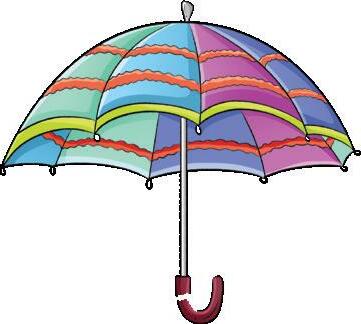




• Observation • Understand the use of 'a' and 'an'

Look at the picture. Say its name. Circle ‘a’ or ‘an’.







Objectives
a / an e lephant a / an orange







a / an apple a / an octopus



a / an van a / an umbrella
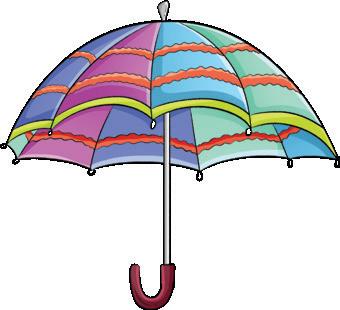
a / an bicycle a / an circle

a / an igloo a / an ant


/ an watch
/ an pencil a / an tortoise

Look at the pictures. Trace their ending sound.






Objectives
• Identify ending sounds

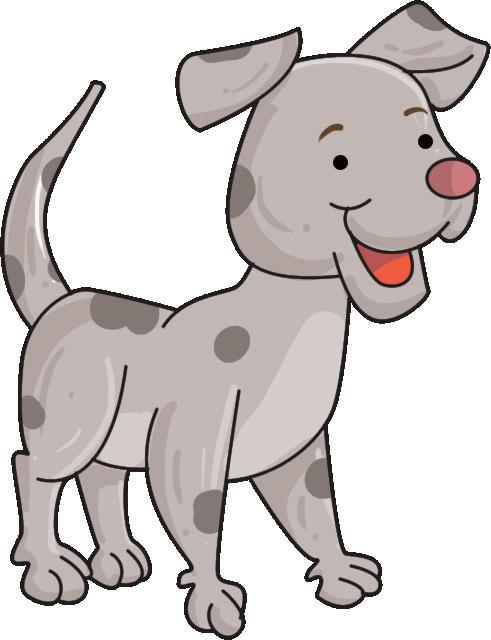
















Read aloud.


bad had mad
sad pad ad dad lad ab ag an

jab cab
lab dab nab
bag

tag
lag sag
rag wag

can

fan
ran man
pan
van
















sap lap gap nap map tap cap mat fat sat rat bat pat

Objectives


• Understand rhyming words • Blending and reading dam yam ram jam
Read and draw.

Complete the puzzles.














Objectives
Critical thinking
Word building






Circle the rhyming words.

fan lad lab can
bat fax fat pan
sap map rag can
dam sad ram mat
wag sap bad bag
cab pan jab pad
lad dad mat pan

Objectives
• Understand rhyming words • Blending and reading


Look at the picture and tick () the correct sentence.
The rat is on the mat.
The cap is on the mat.

The man has a cab.
The man has a cap.

The can is on the van.
The fan is on the van.

The map is in the cab.
The cat is in the cab.

Objectives
• Reading
• Matching and association


If we see a cat, we say, It is a cat.
‘It’ is used for plants, animals and things.

Read, understand and write sentences using ‘It is...’.
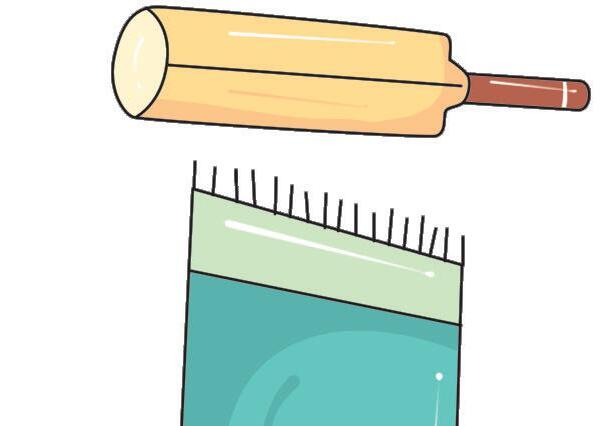






is a a . I is a a .




Objectives
is a can.

• Understand the use of 'It is' • Reading and writing

Read aloud.




pen hen j
ten men den
en et ed eg


get pet met
set let yet

bed

red


leg peg
fed led wed
beg keg

Colour the word that matches the picture.



men den yen ten


leg keg pet wet


met set net vet















Objectives

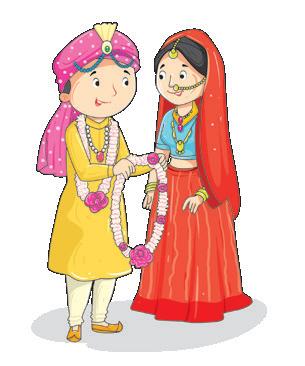





‘This’ is a word we use when we talk about a thing that is near us.
This is a n






Objectives
• Understand the use of 'This is' • Reading and writing

Fill in the blanks with the correct vowels.






Objectives


w

• Identify the correct vowel sound • Blending and reading

1. A cat.







6. A wet cat and a wet hen go to a v

Objectives



Read aloud.




fig zip lip
wig
big rig
dig jig ig

win pin tin in

rip tip hip ip

dip nip sip





fin bin pit kit
hit fit
sit lit it






lid kid nib bib
bid did rid
mid hid rib
ix



sim rim mix six

dim him fix

Objectives
• Rhyming words • Understanding words in same word families
• Blending and reading

Look at the picture and complete the words.











Objectives
• Blending and reading
• Understanding first, middle and last sounds


Find the words in the word search puzzle. lid pit
pin fix fit lip l i d u f i x o p i t f a f i t l i p t b i b p i p i n

Objectives
• Identification • Recognition





Objectives

‘That’ is a word we use when we talk about a thing that is far from us.
That is a bin.

What is that? Write sentences.
Tha is a i .
Tha is a bib.
Tha is a lid.








Objectives
• Understand the use of ’That is' • Reading and writing

See the picture and circle the correct word.










Objectives

Read aloud.





ob ox op




nod rod mob hob cod pod sob cob box

fox top hop
ox cop pop mop






dog bog rot lot got jot dot not pot tot jog hot log cot
Match the words that are same.

Objectives

Look at the pictures and complete the words.
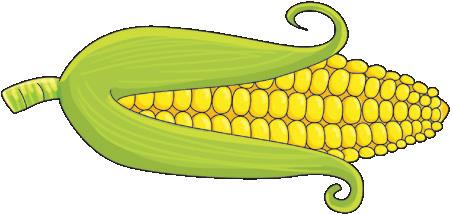






ox lo do od to



Objectives
• Blending and reading • Understanding first, middle and last sounds


Objectives
• Blending and reading • Identification • Association



Objectives
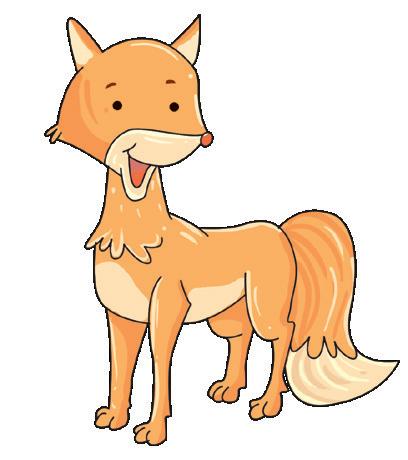







Read and colour.

Sunday afternoon is a rainy day. Anisha and Asif are happy.


They want to make paper boats. They make the boats with newspapers.

They wear their raincoats. They take their umbrellas. They wear their boots.

They go outside to float their boats.


They find a big puddle of water. They float their paper boats in it.

After a while, they go home. They enjoy warm milk and biscuits. They have a lot of fun.

Sight Words: is, a, and, are, they, with, go, to, in, it



‘This’ is a word we use when we talk about a thing that is near us.
‘That’ is a word we use when we talk about a thing that is far from us.
‘It’ is a word we use when we talk about something without saying its name again.
Read and understand.
This is a top. It is red.
That is a top. It is blue. This is a box. It is brown.

That is a dog. It is black.

Circle ‘This’ or ‘That’. Read and colour the pictur

This/That is a pod. It is green.
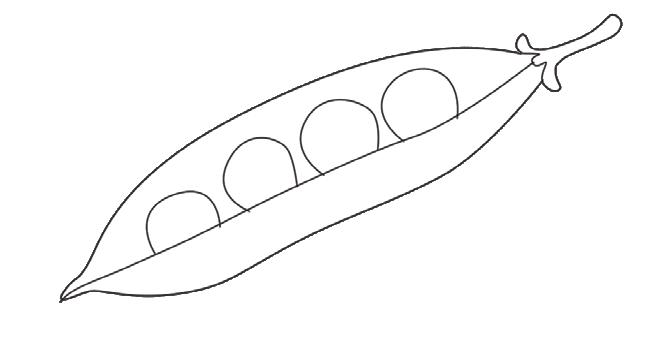
This/That is a mop. It is yellow.
This/That is a fox. It is brown.
This/That is a pot. It is black.

Objectives



• Recall and understand 'This is', 'That is', 'It is' • Reading and writing


Use the picture clues to complete the puzzle.







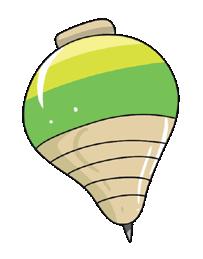

z a k n n g a e

Objectives
• Identification • Word building





ug


cub


tub hug mug
hub rub dub
Read aloud. nut but
rug bug jug tug

fun nun run gun un bun sun


cut hut










Objectives



• Rhyming words • Understanding words in same word families • Blending and reading




Look at the pictures. Colour the correct word with your favourite colour.











Objectives






pictures with the correct words.






Objectives


• Reading • Matching

• Association















Objectives • Reading fluency




Name each picture. Then write the first and the last letters.










Objectives • Building words • Association • Writing skills o o a








Look at the pictures. Write the names in the corr column. The first row has been done for you. a e i o u










rat net dog wig mug








Objectives

The cat had a nap.
The cub is big.
We sat in a bus.
The pan is hot.
The pup is in a tub.

Objectives
• Reading fluency
• Matching and association

















Where is the cat?

The cat is in the cup.
Where is it? Write in or on.
The cat is on the cup.
The ball is the box

The ball is the box

The rat is the hut. The rat is the hut.
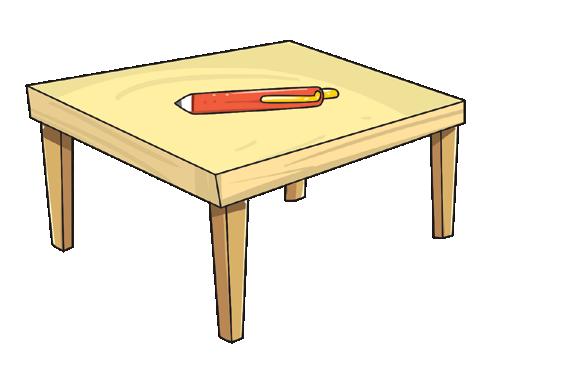

The pen is the table. The pen is the box.

Where is the top?



The top is under the cot. The top is near the cot.
Where is it? Write under or near.


The mop is the bed. The mop is

e bed.
The bug is the flower. The bug is the flower.


The cat is the hat. The cat is the hat.

Look at pictures and write in, on, under or near.
1. The cat is __________ the mat.
____________ the bus.

____________ the hut.



____________ the hut.

The dog is ________________ the cot.


Objectives
• Understand the use of 'in', 'on', 'near', 'under' • Reading and writing

Where is the pup?

The pup is in front


The pup is behind of the hut. the hut.
Where is it? Write in front of or behind.


The bug is the box. The bug is the box.


The bug is the net. The bug is the net.
Once, in a big forest, there was a giraffe who loved to dance. He tapped his feet and swayed his long neck. All the animals clapped.



A lion came along and roared, “Stop dancing, you’re too noisy!” But the giraffe did not even hear him.


Then, the giraffe opened one eye and said, “Come and dance with me. You never have any fun.”

The lion tried a few steps, and all the animals cheered. He gave three steps left and three steps right, thee steps left and three steps right.

Soon, all the animals—rabbits, birds, and even turtles—joined the dance. The forest was a happy place.
Sight Words: in, a, big, there, was, to, he, his, all, the



These words begin with cl, fl, pl, sl. Read them aloud.








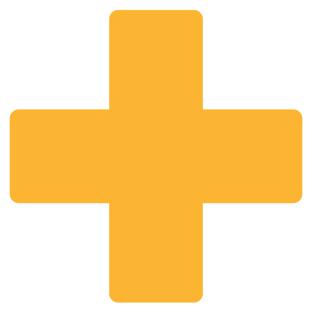



















Objectives
• Blending and reading




These words begin with cr, dr, fr, pr. Read them aloud.
ab


op

ib

op

ip








These words begin with sp, sk, st, sn. Read them aloud.






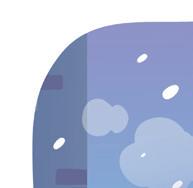





Objectives
• Blending and reading







Objectives
• Blending and reading


• Identify beginning blends



These words end with ng, nt, nk, nd. Read them aloud. king plant







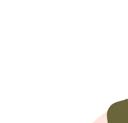







nt




Objectives




• Reading words with ending blends










These words end with mp, ft, lt, sk, st. Read them aloud.




































Objectives
• Reading words with ending blends














































































Look at the pictures and complete the words. me ne sa e i u













e



one pen one top one bag



many pens




many tops many bags
Add ‘s’ at the end of the words to write the words for more than one.










Objectives
van tap


















• Understand the concept of 'one' and 'many'


When we talk about one person or thing we use is.
When we talk about more than one person or thing
we use are.
The rat is small.

The rats are small.



Look at the picture. Fill in the blanks with ‘is’ or ‘are’.







Objectives
• Understand the concept of 'is' and 'are'





























These digraphs begin with ch, sh, wh, th. Read them aloud.
















































Objectives
• Reading words with beginning digraphs

Name these pictures. Then, circle the correct starting digraph.





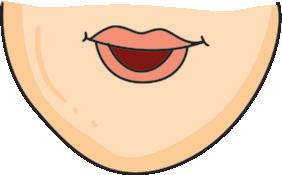




These are words that end with ck. Read them aloud.







sack black rack eck neck check peck ick chick






Objectives • Reading __ck words









Look at the pictures. Complete the words.






Objectives


• Association • Building words s a n e

c h i c k c k f r o t r u r o c l o b l o






These are words that end with ll. Read them aloud.








Objectives
• Reading words with /ll/ sound


































































































Name the pictures. o a i i we
































e





































































These are words that end with ss. Read them aloud.
































Objectives






















• Blending and reading words ending with ss




These words that end with sh, ch, th. Read them aloud.




each

each

each






Look at these words arranged side by side. They are opposites. Read them aloud.





















































Objectives






• Understand opposite words • Vocabulary building



We use these for more than one thing near us.
We use those for things that are far from us.
What are these?
These are apples.



What are those?
Those are hats.
What are these?
These are mugs.





What are those?
Those are bats.

Objectives
• Understand ‘these’ and ‘those’




1. What are these?
2. What are those?




3. What are these?




4. What are those?


5. What are these?





Look at the pictures and read aloud. rain

l

ay

ay

Objectives

l
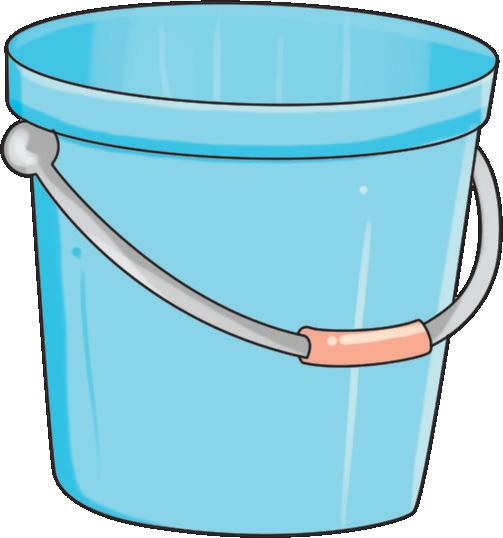





• Reading words with /ai/ sound












Objectives


Look at the pictures and read aloud.







Objectives
• Reading words with /ee/ sound













Write the words in the correct boxes. sea teeth peach seed bee leaf read peep ee ea

Objectives
• Reading words with /ee/ sound


Look at the pictures and read aloud.





















Objectives
• Reading words with /oa/ sound

Write the words in the correct boxes. Then, read the word aloud. crow grow road mow toad coat goal yellow


Objectives
• Reading words with /oa/ sound


These words use oo. Read them aloud.

ook


ook




















Objectives
• Reading words with long /oo/ and short /oo/ sound


ook














A grumpy old woman lived in a tiny little house. She grumbled loudly.

A fairy felt sorry for her. She waved her wand and suddenly the old woman was in a pretty cottage. The old woman was not happy.
The birds are too noisy! Humph, Humph, Fee. This is not good enough for me!
The fairy tried again. She gave the old woman a beautiful house in a city. But, the old woman was not happy.

There are too many cars here! Humph, Humph, Fee. This is not good enough for me!
So, the fairy gave her a castle in the forest. The old woman was still not happy.

How will I clean this big place? Humph, Humph, Fee. This does not work for me!

The fairy was tired of the old woman’s grumbling.

“Well, if you want something small to clean, I will put you in a vinegar bottle.”
So, that is how the woman had to live. Now, she only had a tiny bed, a little mat, an old stove and a grumpy cat!
Sight Words: a, old, she, the, not, good, for, me, to 105


These words tell us what someone is doing.














Objectives


entences and circle the correct picture.

I kick.
I jump.
I read.

I cook.



We use he when we talk about a boy or a man.
We use she when we talk about a girl or a woman.

We use it when we talk about a place, thing or animal.
Circle the correct word.





Monday, Tuesday Wednesday too,
Thursday, Friday, just for you.
Saturday, Sunday, that’s the end,
Now let’s say them all again!
Monday, Tuesday, Wednesday,Thursday
Friday, Saturday, Sunday hey!
Seven days are in a week,
Let’s all shout and clap and speak!
Trace the names of the days of the week.
Monda Tuesda Sa urda Frida Wednesda Sunda
Thursda

Write the names of the days of the week.

What comes after?
Monday
Wednesday
Saturday
What do you like to do on Sunday?

Objectives
• Learning the days of the week • Writing their names



January, February, March, and April, May, June, July, and August,
September, October, November, December,
These are the months of the year!
Clap your hands and sing along,
Learn the months, it won't take long.
Trace the names of the months of a year.
Januar March
A ril Ma June Jul Au us
Februar Se ember
Oc ober November December

Write the names of months of the year.

comes after? 1. February 2. May 3. September
Which month is your birthday?

Objectives
• Learning the names of months of the year • Writing their names


Some things go together. We use and to join them.
Look, read and write.
bread
butter



















Objectives
• Understand the use of 'and'







When there is an ‘e’ at the end of the word, we use the long sound of the first vowel. Let us see how. Read these words aloud.




e













Objectives
• Reading words with magic 'e'


1. Play Games with Sounds: Look for an object around the room that begins with a letter and then say, “I spy with my little eye a word that begins with… b/b/b…”. “I am thinking of a fruit that rhymes with big. What’s the fruit?” (fig). What else rhymes with fig? (dig, wig)
2. Rhyming with Word families: Word families are sets of words that rhyme. Start to build your word family by giving children the first word, for example, cat. Then ask them to name all the words in the word family, such as: bat, fat, sat, rat, pat, mat, hat, flat. This will help the children hear patterns in words.
3. Phonic Songs, Rhymes and Alliteration: Sing songs and say silly tongue twisters. These help the children identify and recognise the sounds in words. Focus on rhymes where the same sound is repeated over and over again. For example: Annie ant eats an apple.
4. Sound Hunt: Choose a letter sound, and ask the children to look for and find things around the room that begin with the same sound. “Let’s find something that begins with the letter “c”… /k/-/k/-/k/ sound.” (cat, card, crayon)
5. Sound Games: Practise blending sounds into words. Ask “Can you guess what this word is? (t - o – p).” Hold each sound longer than normal.
Tips for Introducing Complex Phonic Sounds
1. Blends Introduction:
• Blending Sounds: Start by introducing blends (e.g., "bl," "tr," "st"). Use flashcards to show pictures of words that contain blends (e.g., "blue," "tree," "star").
• Blending Game: Say each sound in a blend slowly and have children guess the word. For example, “/b/…/l/…/ue/” for "blue."
2. Digraphs Introduction:
• Sound Matching: Introduce digraphs (e.g., "sh," "ch," "th") with visuals. Show words like "ship," "chair," and "this."
• Picture Matching: Provide pictures of items that start with digraphs and have children match them with the correct letter pairs.
3. Magic "e" Concept:
• Magic "e" Activity: Explain how adding an "e" at the end of a word changes the vowel sound (e.g., "cap" to "cape"). Use visual aids and examples.
• Word Building: Create words using letter tiles or cards, showing the effect of Magic "e" on short vowels.
4. Long Vowel Sounds:
• Long Vowel Songs: Sing songs that emphasise long vowel sounds. For example, “A says its name in the word ‘pail.’”
• Sound Hunt: Choose a long vowel sound (e.g., "ai" in "sail") and ask children to make rhyming words.

1. Blend Bingo: Create bingo cards with words containing blends. Call out the sounds, and children can mark their cards when they recognise the blends.
2. Phonemic Segmentation: Phonemic segmentation involves breaking down words into their individual sounds or phonemes. Segmenting can be improved by encouraging children to listen to a word and break it into individual sounds.
3. Grapheme-Phoneme Knowledge
Grapheme-phoneme knowledge refers to understanding the connection between letters (graphemes) and their corresponding sounds (phonemes). It involves recognising which letter or combination of letters produces a specific sound in a word. For instance, knowing that the letter “c” represents the /k/ sound in “cat” or that “ph” produces the /f/ sound in “phone.” This understanding is crucial for children as it enables them to read by decoding the sounds associated with letters and blending them to form words.
4. Digraph Detective: Provide a list of words, and have children identify which ones contain digraphs. Use a magnifying glass to make it a fun “detective” activity.
5. Magic "e" Pairs: Have children create pairs of words, one with Magic "e" and one without. For instance, “hop” and “hope.” They can draw pictures to illustrate the difference.
6. Long Vowel Picture Match: Use pictures of items that have long vowel sounds and have children match them to the correct long vowel spelling.
7. Letter Combination Cards
Letter combination cards (with digraphs and blends) can also be used to help children learn how combinations of letters create different sounds. You can shuffle these cards and ask children to create words out of the letter combinations.
8. Replacing One Letter in a Word
Replacing one letter in a word to make a new word (such as replacing ‘c’ in ‘clip’ with ‘f’ to make the word ‘flip’) is also a great exercise. As young learners play this game, they are learning how to spell words, recognize letter combinations and their sounds, and understand the importance of word structure.
9. Engage in Reading Books
Encourage children to practise their phonics skills by engaging with a variety of books. Reading not only helps in reinforcing the sounds and letters they learn but also boosts their confidence and love for reading. Take the time to read to and with children.
Encourage them to read sentences and short stories from the READER provided with the book set. The READER allows them to progress to more challenging words and sentences as their skills improve.
1. CVC Words with Picture Clues: Use pictures of words with simple CVC words such as cat, dog, or bat. Hold the picture up for everyone to see and ask the children to name the picture. Encourage them to say the word aloud! This would help them segment the sounds in the words.
2. Segmenting Sounds: After saying the words, ask the children to segment the sounds they hear in the words. For example, if you're showing the CVC picture of a cat, ask them to identify the first sound they hear /k/ and then the middle sound /a/, and finally the last sound /t/.
3. CVC Word Building and Writing: As the children segment the sounds, ask them to use the letter flashcards and make the words. Finally, have them write the corresponding words in their books or notebooks.
4. CVC Word Reading and Blending Sounds: In this activity, ask the children to imagine taking a walk along a CVC reading road. As they walk, they learn to segment and blend CVC words. Using the flashcards of letters, make a flashcard letter strip as your reading road. Space the letters out a little and arrange them in a way so they form different CVC words. Encourage the children to say the beginning, middle, and ending sound of the CVC words.
5. Blends and Digraph Picture Sorting:
• Provide flashcards with blends and digraphs (e.g., sl, cl, th, ch) and pictures that represent those sounds.
• Ask children to sort the cards based on the digraphs and then read the words aloud.
6. Blends and Digraph Word Creation:
• Have children pick a digraph flashcard and create words by adding letters. For example, "ch" could lead to "chat," "chip," and "chop."
• Encourage them to write the new words down.
7. Blends and Digraph Bingo:
• Create bingo cards with words containing blends and digraphs. Call out the blend or the digraph sound and have children cover the corresponding word on their cards.


















































eek















whale


tray


boat
three







pail













book ship chick tree



























































bell
























































































plug tea




ss clip swan bow flag slip



DAWN is a comprehensive, NCF 2022-based Early Childhood Education program that lays a solid foundation for lifelong well-being and holistic growth, encompassing physical, cognitive, and socio-emotional development.
This Literacy Skillbook has been designed to especially develop phonemic awareness, soundsymbol relationship, vocabulary, oral language, reading comprehension and writing skills.
Additional Resources
• Flash Cards
• Sticker Sheets
• Suggested Activities List, for teacher and parents
• Teacher's Manual
• Digital Resouces
• Assessment Sheets and Holistic Progress Card
• Play-based learning activities, which promote holistic development of the child in all ECE domains
• School readiness, which is assured in the curriculum and learning design
• All-round development, in areas of physical, cognitive, cultural and socio-emotional domains
• Teacher assets, like assessment tools and lesson plans to help maximise program quality and outcomes
Uolo partners with K-12 schools to provide technology-enabled learning programs. We believe that pedagogy and technology must come together to deliver scalable learning experiences that generate measurable outcomes. Uolo is trusted by over 15,000+ schools across India, Southeast Asia and the Middle East.
ISBN 978-81-980375-1-0
